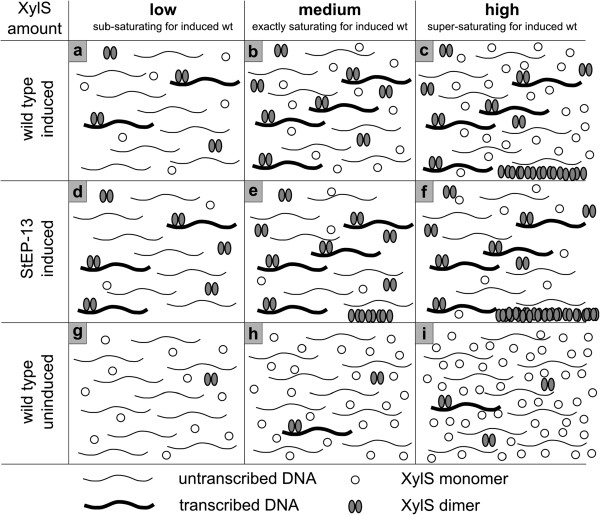Figure 6.

Visualization of the hypothesis explaining XylS behaviour at various intracellular concentrations. The numbers of DNA or XylS molecules are not meant to represent the actual numbers in the cells. Only aggregates formed from active dimers of the protein are considered. At low XylS concentrations a certain percentage of the dimerized XylS molecules will activate transcription (a); the amount of activated Pm promoters will increase proportionally to XylS amounts up to a certain treshold value (b); when the threshold value is exceeded, XylS dimers will aggregate and become inactive, while the amount of active dimers remains constant (c). For StEP-13 a higher percentage of XylS molecules will dimerize at low XylS concentrations, resulting in more transcribed DNA (d); when the saturating concentration for wild type XylS is reached, there will already be some aggregation of dimers in case of StEP-13 (e), and as for wild type this will increase further as more XylS is expressed (f). In the absence of m-toluate, only a very small fraction of the XylS molecules will form dimers and these will activate transcription from Pm, aggregation does not start at the XylS expression levels depicted here (g, h, i).
